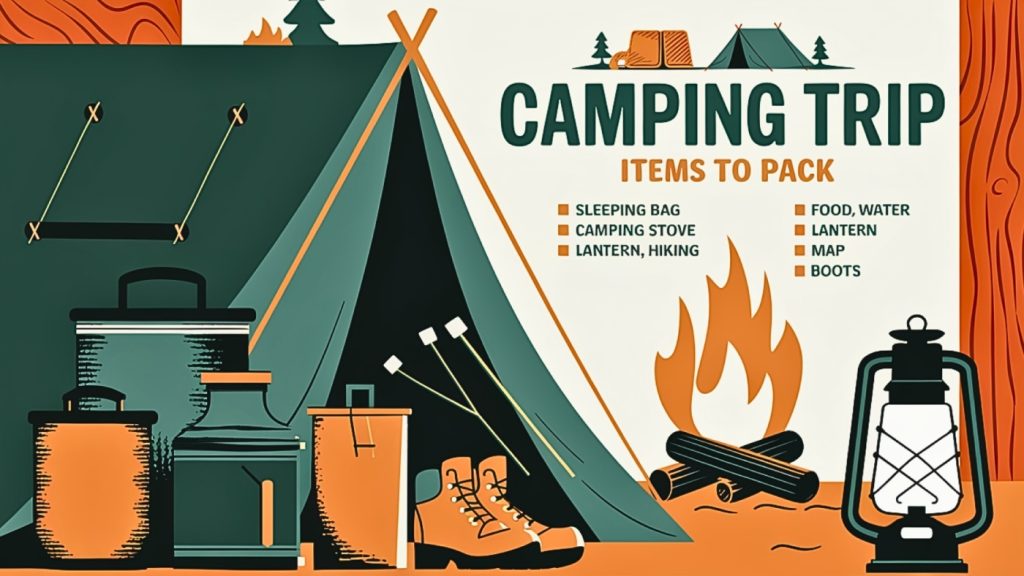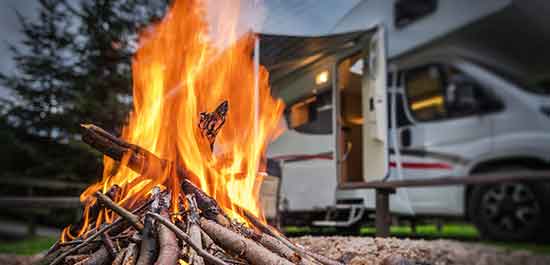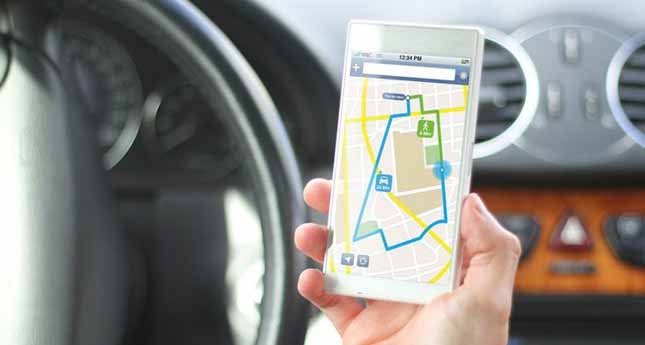Last Updated on January 12, 2025
To pack for a camping trip, start with essential gear like a quality tent, sleeping bags, and cozy clothing. Bring moisture-wicking layers, sturdy hiking boots, and a reliable rain jacket.
Don’t forget cooking supplies—think stove, pots, and utensils—as well as safety items like a first aid kit and flashlight. Personal toiletries are vital too, including biodegradable soap and sunscreen. Finally, pack navigation tools and plenty of water.
With the right preparation, you’ll make the most of your time in nature. Keep exploring to ensure you’ve got everything needed for an unforgettable adventure.
Key Takeaways
- Pack a quality tent, sleeping bags, and cozy sleepwear for comfortable shelter and rest during your camping trip.
- Bring adequate cooking gear, including a portable stove, cooking pots, utensils, and cleaning supplies for meal preparation.
- Include moisture-wicking clothing, waterproof jackets, and sturdy footwear to ensure comfort and protection from the elements.
- Don’t forget a first aid kit, safety gear, and sun/bug protection to address health and safety needs while camping.
- Personal toiletries like toothbrushes, biodegradable soap, and quick-drying towels will help maintain hygiene and comfort during your trip.
Essential Camping Gear
When it comes to camping, having the right gear can make all the difference in your experience. Start with a quality tent, including essential components like a footprint and porch. Don’t forget spare tent pegs and a mallet to secure your shelter against the elements.
For a comfortable night’s sleep, pack a sleeping bag or duvet for each camper. Clothing is essential, so bring moisture-wicking base layers and a reliable rain jacket to keep you dry.
Sturdy hiking boots or shoes paired with quality hiking socks will support your adventures, while sleepwear guarantees you’re cozy at night.
For lighting and safety, headlamps or flashlights with extra batteries are must-haves. A lantern can illuminate your campsite, but remember to pack mantles and fuel as needed. A fire starter and first aid kit are also important for safety and emergencies, as a well-stocked first aid kit can treat minor injuries effectively. Don’t forget sun and bug protection.
Lastly, miscellaneous essentials like water jugs, a navigation system (map, GPS, compass), and a basic repair kit will keep you prepared.
A quality tent is also essential as it provides shelter and a comfortable space for resting after a long day of outdoor activities. Charge your cell phone, and make sure you have campsite reservations and park passes ready before you head out.
Cooking Equipment Checklist
Packing the right cooking equipment can elevate your camping experience, making meal prep efficient and enjoyable. Start with a reliable stove and fuel to ensure you can cook meals easily. Don’t forget to pack at least two cooking pots and a camping pan or skillet for versatile cooking options.
Your cooking utensils are essential—grab a spatula, cooking spoon, and tongs to help with food prep and serving. For dining, bring along plates and bowls so everyone can enjoy their meals comfortably.
A cast iron skillet and a frying pan are great additions for cooking over the campfire. Additionally, ensuring you have essential cooking utensils like measuring cups and knives can further streamline meal preparation.
To enhance your campfire cooking, pack aluminum foil for wrapping food, oven mittens to protect your hands, and a lighter or fire starter for easy ignition. Don’t overlook a Coghlan’s Camp Fork for roasting marshmallows or hot dogs!
Focus on cleanliness and storage. Bring dish soap, a sponge, and a dish strainer to keep your cooking gear tidy. Trash bags will help you leave no trace, while a cooler with ice packs keeps perishable items fresh.
Clothing and Footwear
After setting up your cooking gear, it’s time to focus on what you’ll wear during your camping adventure. Packing the right clothing and footwear is essential for comfort and protection against the elements. Here’s a quick reference table to help you choose the best layers for your trip:
| Layer Type | Recommended Items |
|---|---|
| Base Layers | Moisture-wicking tees, long underwear, quick-drying pants, breathable tank tops |
| Middle Layers | Fleece jackets, sweatshirts, insulating lightweight jackets |
| Outer Layers | Waterproof jackets, rain pants, insulated jackets |
| Footwear | Sturdy hiking boots, sandals, extra wool/synthetic socks |
| Accessories | Sun hats, gloves for warmth |
Start with moisture-wicking base layers to keep you dry, then add insulating middle layers for warmth during chilly nights. Don’t forget a waterproof outer layer to shield you from rain or wind.
For footwear, sturdy hiking boots are a must, but also pack sandals for relaxing around the campsite. Remember to utilize seasonal checklists to ensure you’re prepared for varying temperatures and conditions.
Health and Safety Items
Health and safety items play an essential role in guaranteeing your camping trip remains enjoyable and accident-free. First and foremost, pack a thorough first aid kit. Include bandages for various injuries, antiseptic wipes for cleaning wounds, gauze for dressing, and over-the-counter pain relievers and antihistamines.
Don’t forget your prescription medications and health cards; they’re important in emergencies.
Additionally, secure your safety by bringing a portable fire extinguisher and an emergency blanket to retain body heat if needed. Hand sanitizer is critical for maintaining hygiene, while high SPF, water-resistant sunscreen protects you from harmful UV rays.
Insect repellent containing DEET will keep pesky bugs at bay. It’s also wise to check for the availability of clean water at your campsite to ensure proper hydration during your trip.
Prepare for emergencies with items like an emergency whistle to signal for help, a map and compass for navigation, and jugs of freshwater. Spare batteries for your flashlight and bear mace for wildlife encounters are also smart choices.
Personal Toiletries and Extras
When heading out for a camping trip, don’t overlook the importance of personal toiletries and extras to guarantee comfort and hygiene in the great outdoors. Packing the right items can make your experience much more enjoyable, so be sure to include these essentials:
- Toothbrush and toothpaste
- Deodorant
- Quick-drying towels
- Moist towelettes
You’ll want to maintain your personal hygiene, so include biodegradable soap, hand sanitizer, and body wash. If you’re hiking or spending time in the sun, don’t forget sunscreen and lip balm with SPF to protect your skin. Traveling light can also help you keep your packing organized and focused on your essential needs.
Also, consider your personal care needs. Bring along any prescription medications, menstrual products, and a basic first-aid kit. If you wear contact lenses, pack those along with the solution.
Lastly, think about comfort and ease. A mirror, comb or brush, and insect repellent will enhance your outdoor experience.
Frequently Asked Questions
How Do I Choose the Right Camping Location?
When choosing the right camping location, consider proximity to attractions and accessibility.
Look for suitable terrain for your gear and check local regulations.
Assess safety factors, including natural hazards and emergency services.
Evaluate environmental conditions like climate and vegetation for comfort.
Ensure the campsite is spacious enough for your group and gear, with easy access to water and amenities.
Finally, select a spot that offers a pleasing view to enhance your experience.
What Are the Best Camping Activities for Families?
Imagine you’re at a campsite with your family, laughter ringing out as you set up a scavenger hunt.
It’s a fantastic way to engage everyone, combining fun with learning about nature. You could also enjoy tug-of-war for some friendly competition or make friendship bracelets to remember the trip.
Don’t forget to gather around the campfire for storytelling, as these activities create lasting memories and strengthen family bonds in the great outdoors.
How Can I Minimize My Impact on the Environment While Camping?
To minimize your impact on the environment while camping, start by using reusable gear and avoiding single-use plastics.
Always pack out your trash, including food scraps and hygiene products.
Stick to established trails to protect vegetation, and choose eco-friendly campsites that are far from water sources.
Conserve resources by using solar-powered devices and sustainable cooking methods.
Finally, respect nature by leaving no trace and preserving natural features for future visitors to enjoy.
What Should I Do if I Encounter Wildlife?
If you encounter wildlife, stay calm and avoid sudden movements.
Maintain a safe distance, as animals are often more scared of you than you’re of them.
Use loud noises to alert them of your presence, and use a flashlight at night to deter them.
Never approach or feed wildlife; it’s essential to keep them wild.
If you’re in bear country, carry bear spray as a precaution.
Always prioritize safety for both you and the animal.
How Can I Stay Connected While Camping Without Wi-Fi?
Envision this: you’re deep in the wilderness, surrounded by nature’s beauty, but cut off from the world!
Don’t fret; staying connected is totally doable without Wi-Fi. Grab a ham radio for long-distance chats or some lightweight walkie-talkies for quick communication with your camping buddies.
If you need more reliability, consider a cell signal booster. For true adventurers, satellite phones can keep you linked, even in the most remote areas.
Stay connected and enjoy!
Pack Smart for Your Camping Trip: Ensure a Safe and Memorable Adventure
Packing for a camping trip is like packing for an adventure into the wild unknown. With the right gear, cooking essentials, and personal items, you’ll be ready to embrace nature without a hitch.
Remember, preparation is key to enjoying your time outdoors. So, double-check your list, and make sure you’ve got everything you need to stay safe and comfortable. Now, grab your gear, and get ready to create unforgettable memories in the great outdoors.



